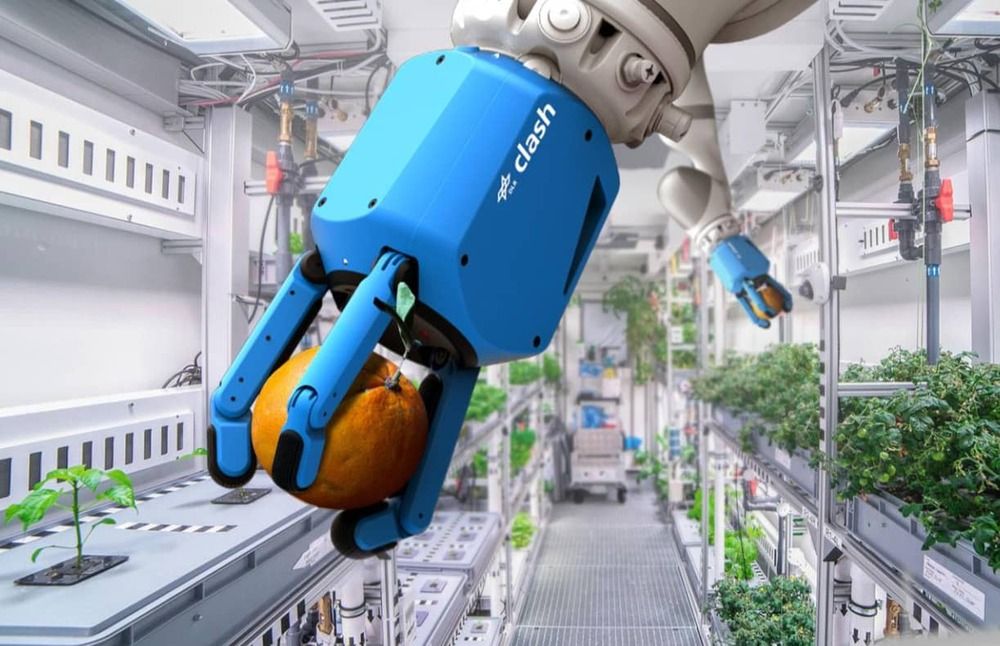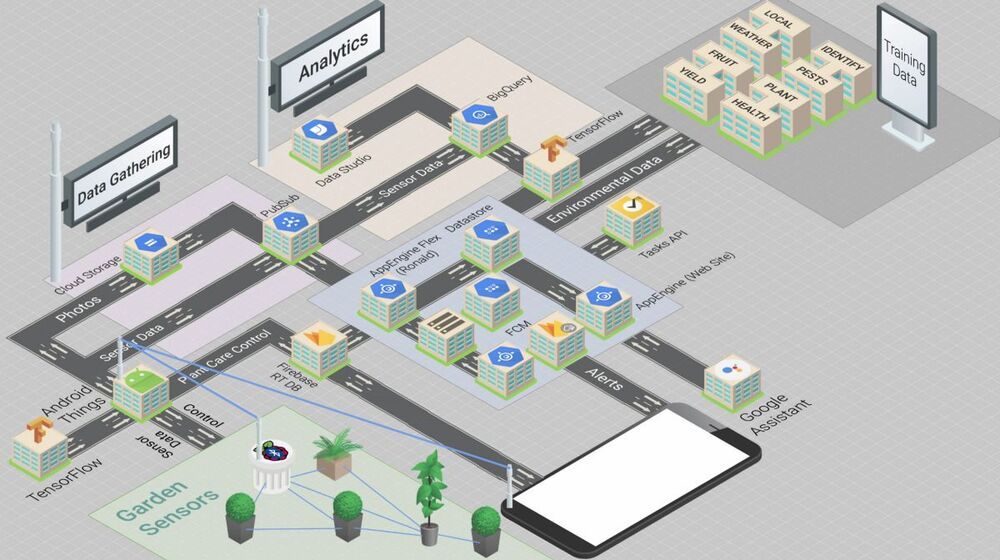As Elon Musk and Jeff Bezos rocket companies lead a new space race, NASA is working on AI and robotics to farm space plants and feed interplanetary humans.




The plasticizers contained in many everyday objects can impair important brain functions in humans. Biologists from the University of Bayreuth warn of this danger in an article in Communications Biology. Their study shows that even small amounts of the plasticizers bisphenol A and bisphenol S disrupt the transmission of signals between nerve cells in the brains of fish. The researchers consider it very likely that similar interference can also occur in the brains of adult humans. They, therefore, call for the rapid development of alternative plasticizers that do not pose a risk to the central nervous system.
Bisphenols are plasticizers that are found in a large number of plastic products worldwide — for example, in food packaging, plastic tableware, drinking bottles, toys, tooth fillings, and babies’ dummies. In recent years, numerous health risks have already been associated with them, especially with bisphenol A (BPA). The Bayreuth research team led by Dr. Peter Machnik at the Animal Physiology research group (led by Prof. Dr. Stefan Schuster) has now for the first time investigated the effects of plasticizers on signal transmission between nerve cells in the adult brain. The study covers not only BPA, but also bisphenol S (BPS), which is often considered less harmful to health. Their findings: Both plasticizers impair communication between the nerve cells of the brain.

The population on Earth is increasingly growing and people are expected to live longer in the future. Thus, better and more reliable therapies to treat human diseases such as Alzheimer’s and cardiovascular diseases are crucial. To cope with the challenge of ensuring healthy aging, a group of international scientists investigated the potential of biosynthesising several polyamines and polyamines analogs with already known functionalities in treating and preventing age-related diseases.
One of the most interesting molecules to study was spermidine, which is a natural product already present in people’s blood and an inducer of autophagy that is an essential cellular process for clearing damaged proteins, e.g., misfolded proteins in brain cells that can cause Alzheimer’s. When people get older the level of spermidine in the blood decrease and dietary supplements, or certain food products are needed to maintain a stable and high level of spermidine in the blood. However, those products are difficult to produce with traditional chemistry due to their structural complexity and extraction of natural resources is neither a commercially viable nor a sustainable approach.
Therefore, the researchers instead decided to open their biochemical toolbox and use classical metabolic engineering strategies to engineer the yeast metabolism to produce polyamines and polyamines analogs.

Thu, jun 17 at 3 PM PDT.
Join us early at 6:00 PM for a Perpetual Life Virtual Party. Then 7 PM presentation with Brian Clement Ph.D., L.N. of The Hippocrates Health Institute.
Brian Clements’s experience with food and lifestyle was like that of most. At the early age of 20, he began his journey to embrace a healthier way of life. Shedding exceptional weight and leaving behind, cigarettes and grass, he finally felt himself for the first time ever. Mature colleagues placed him under their wing and slowly led him down the road via conferences, lectures, and seminars held by some of the historic figures in the modern health movement.
Stay after for the Q & A and discussions interactive Zoom.
For those who track their diet, eating only the RDA for many nutrients may not optimize health. For example, the RDA for selenium is 55 micrograms per day, but is that amount optimal for reducing risk of death for all causes?
Papers referenced in the video:
The role of mitochondrial DNA mutations and free radicals in disease and ageing.
https://pubmed.ncbi.nlm.nih.gov/23432181/
The Hallmarks of Aging.
https://pubmed.ncbi.nlm.nih.gov/23746838/
Dietary Reference Intakes for Vitamin C, Vitamin E, Selenium, and Carotenoids.

A long-held goal by chemists across many industries, including energy, pharmaceuticals, energetics, food additives and organic semiconductors, is to imagine the chemical structure of a new molecule and be able to predict how it will function for a desired application. In practice, this vision is difficult, often requiring extensive laboratory work to synthesize, isolate, purify and characterize newly designed molecules to obtain the desired information.
Recently, a team of Lawrence Livermore National Laboratory (LLNL) materials and computer scientists have brought this vision to fruition for energetic molecules by creating machine learning (ML) models that can predict molecules’ crystalline properties from their chemical structures alone, such as molecular density. Predicting crystal structure descriptors (rather than the entire crystal structure) offers an efficient method to infer a material’s properties, thus expediting materials design and discovery. The research appears in the Journal of Chemical Information and Modeling.
“One of the team’s most prominent ML models is capable of predicting the crystalline density of energetic and energetic-like molecules with a high degree of accuracy compared to previous ML-based methods,” said Phan Nguyen, LLNL applied mathematician and co-first author of the paper.

Designing an autonomous, learning smart garden.
In the first episode of Build Out, Colt and Reto — tasked with designing the architecture for a “Smart Garden” — supplied two very different concepts, that nevertheless featured many overlapping elements. Take a look at the video to see what they came up with, then continue reading to see how you can learn from their explorations to build your very own Smart Garden.
Both solutions aim to optimize plant care using sensors, weather forecasts, and machine learning. Watering and fertilizing routines for the plants are updated regularly to guarantee the best growth, health, and fruit yield possible.
Colt’s solution is optimized for small-scale home farming, using a modified CNC machine to care for a fruit or vegetable patch. The drill bit is replaced with a liquid spout, UV light, and camera, while the cutting area is replaced with a plant bed that includes sensors to track moisture, nutrient levels, and weight.

Circa 2011
It sounds like a late-night infomercial: Kill germs and clean surfaces with nothing more than water and a few volts of electricity! Pay pennies a gallon! Strong enough to kill germs but gentle on your skin!
The use of electricity and water to clean and disinfect has been embraced by some food and hospitality businesses looking to save money and go green by swapping out conventional products.
At busy Whole Foods on Manhattan’s Union Square, workers keep battery-operated spray bottles designed to keep surfaces clean with water packing an electrical charge. Also available are electrolyzed oxidizing water products, or EO water, which are cleaning systems that use salt and electricity to create solutions for cleaning kitchens, prison floors and hotel rooms.

An emerging ransomware strain in the threat landscape claims to have breached 30 organizations in just four months since it went operational, riding on the coattails of a notorious ransomware syndicate.
First observed in February 2021, “Prometheus” is an offshoot of another well-known ransomware variant called Thanos, which was previously deployed against state-run organizations in the Middle East and North Africa last year.
The affected entities are believed to be government, financial services, manufacturing, logistics, consulting, agriculture, healthcare services, insurance agencies, energy and law firms in the U.S., U.K., and a dozen more countries in Asia, Europe, the Middle East, and South America, according to new research published by Palo Alto Networks’ Unit 42 threat intelligence team.